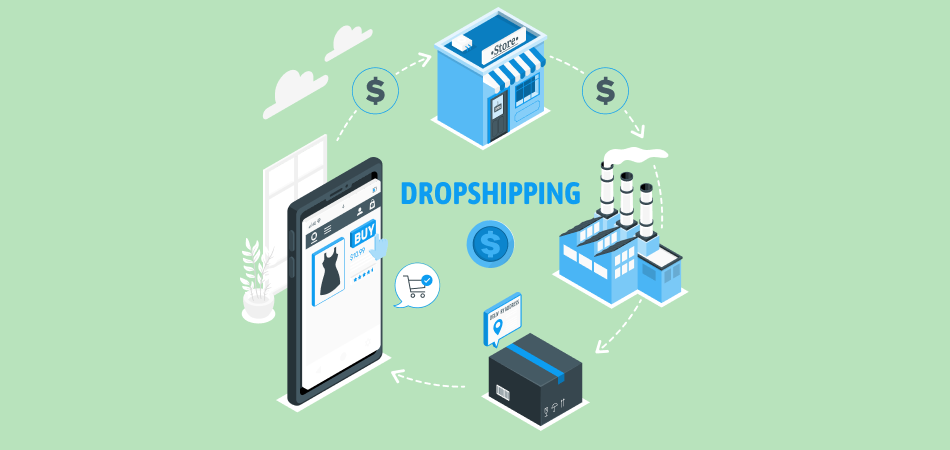Cash Flow Formula - All You Need to Know

Many small and middle-size businesses are using key formulas to track cash inflows and outflows. In this article, we’re going to talk about cash flow—the lifeline of every business. It's like the pulse that tells us how financially healthy a company is and whether it's built to withstand the test of time. Understanding and managing cash flow is crucial for entrepreneurs, managers, and investors like you. And that's where the cash flow formula comes into play!
Let’s start with us as here we’ll give you a rundown of the essential cash flow formula that every business owner should know. Furthermore, learn how to calculate it and, even more thrilling, how dropshippers can leverage it to evaluate their financial performance, plan for the future, and make brilliant business decisions.
What Is Cash Flow Formula
The cash flow formula is a magical math equation used in financial analysis in which accountants and business owners measure the flow of money over a specific period. It effectively unveils the financial bloodstream of a company, such as the flow of money, how it enters, how it exits, and what remains. It's like peering into the heart and soul of a business. Moreover, it bestows valuable insights into the financial transactions that help businesses to grow.

And here's the utmost exciting part: with a robust cash flow formula, businesses can dissect their liquidity, solvency, and overall financial stability. It determines the overall financial standing of a company. So, let's roll up our sleeves, break it down even further, and unlock the hidden secrets of financial analysis.
4 Cash Flow Categories to Know
There are a variety of ways to analyze cash flow and some of the preferable methods are listed below:
Operating Cash Flow Formula
This category reflects the cash generated or consumed by a company's core business activities. It takes into consideration revenue, day-to-day expenses, and changes in working capital. Operating cash flow tells us how well a company can generate cash from its regular day-to-day operations.
The formula for operating cash flow looks like this:
Operating Cash Flow = Net Income + Depreciation- Taxes + Changes in Working Capital
Investing Cash Flow Formula
Investing cash flow formula focuses on the cash flow generated by investment activities. It includes things like buying or selling long-term assets, investing in securities, and capital expenditures. By analyzing investing cash flow, we can understand how a company utilizes its resources for growth and expansion.
Financing Cash Flow Formula
Now, let's move on to financing cash flow. It effectively tracks the movement of cash resulting from financing activities. It involves cash inflows and outflows related to external financing sources, such as issuing or repurchasing stock, obtaining or repaying loans, and paying dividends. By analyzing financing cash flow, we gain insights into how a company raises capital and manages its financial structure.
| Get Started Now to Grow Your Online Business with the Best AliExpress Dropshipping Tool - DSers! |
Free Cash Flow Formula
The free cash flow formula represents the cash available to a company after subtracting capital expenditures needed to maintain or grow operations. Free cash flow indicates the excess cash that a company can use for debt reduction, shareholder dividends, or reinvesting in the business along with daily business operations.
The formula for free cash flow is:
Free Cash Flow = Operating Cash Flow or Profits - Capital Expenditures
How to Calculate Cash Flows
The cash flow formula could be easy or complex for you. Nowadays, many large-scale businesses are using tech-advanced tools to calculate cash flow as its understanding is paramount to operating a business. However, it's essential to determine the financial health of a business and make informed decisions. Let’s check out the below-listed formulas to calculate cash flows:
Operating Cash Flow Formula
Operating cash flow is extremely vital for a business, and calculating it helps us understand how well a company is performing financially. Positive operating cash flow indicates that the business is generating enough cash to cover its day-to-day expenses and investments. It's a sign of a healthy and thriving operation.
To calculate operating cash flow, we follow these steps:
Step 1: Start with the net income. You can find this figure in the company's income statement.
Step 2: Add non-cash expenses. This includes things like depreciation and amortization—expenses reflected on the income statement but don't require an actual cash outflow.
Step 3: Account for changes in working capital. Consider the changes in current assets and current liabilities within the reporting period. This gives us a more accurate idea of the cash flow generated by the company's core operations.
Let's break down the operating cash flow formula with an example. Imagine a company with a net income of $100,000, non-cash expenses of $20,000, and changes in working capital of $10,000.
Operating Cash Flow = $100,000 (Net Income) + $20,000 (Non-Cash Expenses) + $10,000 (Changes in Working Capital)
= $130,000
In this example, the operating cash flow for the company is $130,000. This means that the company has generated $130,000 in cash from its core business activities.
Investing Cash Flow Formula
Cash flow from investing activities is also a part of the company’s cash flow statement. It includes cash inflows from investments, such as the sale of long-term assets or securities, and cash outflows for investments, such as purchasing new equipment or making capital expenditures.

Investing cash flow helps us evaluate the company's investment decisions and its ability to allocate resources efficiently for growth and expansion. By analyzing investing cash flow, we can determine if the company is making wise investment choices that contribute to long-term success.
Financing Cash Flow Formula
It captures the movement of cash resulting from financing activities. It includes cash inflows from activities like issuing stocks, obtaining loans, or receiving capital injections, as well as cash outflows for activities such as repurchasing stocks, repaying loans, or paying dividends.
Analyzing financing cash flow gives us insights into how the company raises capital to support its operations and how it returns value to its shareholders. By understanding the financing cash flow, we can assess the company's financial structure and determine if it's sustainable and aligned with its long-term goals.
Free Cash Flow Formula
The free cash flow (FCF) formula represents the cash available to the company after deducting capital expenditures necessary to sustain or grow its operations. This magical metric shows us how much cash a company can generate, and guess what? It can be used for all sorts of amazing things like paying off debts, rewarding shareholders with juicy dividends, or even reinvesting in the business to fuel growth.
By calculating free cash flow, we can dig deep into a company's financial flexibility and determine if it's ready to conquer new horizons while standing strong on a solid financial foundation.
Uses of Cash Flow Formula for Dropshippers
As we know, cash flow determines the profitability of a company but it’s quite hard to understand and as a result of it many businesses fail. As a dropshipper operating in a competitive e-commerce environment, understanding and utilizing the cash flow formula can be a game-changer for your business. So, let’s get to how you can use the cash flow formula and avail long-term success.
Evaluating Financial Health and Performance
By calculating operating cash flow, dropshippers can assess the company's ability to generate cash from its core operations. Positive operating cash flow indicates that the business is generating enough cash to cover its day-to-day expenses and investments. This means you're on the right track!

Analyzing investing cash flow helps dropshippers evaluate their investment decisions. By tracking the cash inflows and outflows related to investments, you can determine if your investments are generating the desired returns and contributing to long-term growth.
Similarly, scrutinizing financing cash flow helps dropshippers assess their capital structure and financing decisions. It enables you to understand how external financing sources impact your cash position and determine if the company's financial structure is sustainable. This knowledge empowers you to make strategic decisions regarding financing options, dividend policies, and overall financial management.
Planning for Future Cash Needs
As a dropshipper, predicting cash flow is crucial for planning future financial demands. By analyzing previous cash flow patterns and using them as a foundation, you can forecast future cash inflows and outflows. This enables you to anticipate potential cash shortages or surpluses and make well-informed judgments about inventory management, marketing efforts, and business expansion strategies.
Having a clear understanding of your planned cash flow allows you to proactively manage your finances and ensure you have enough liquidity to support your operations. It provides you with the confidence and peace of mind to navigate the dynamic e-commerce landscape with ease.
Making Informed Business Decisions
The cash flow formula serves as a compass guiding you through critical business decisions. Whether you're evaluating the feasibility of a new product line, assessing the profitability of a marketing campaign, or considering expansion opportunities, understanding the cash flow implications is essential.
By analyzing free cash flow, you can determine the amount of cash available for debt reduction, dividends, or reinvestment in your business. This empowers you to make informed decisions regarding your financial priorities. You can choose to reduce your debt burden, reward your hard work through dividends, or reinvest in your business to fuel further growth.

Furthermore, monitoring the cash flow from operating activities enables you to identify potential inefficiencies in your business processes. By pinpointing areas where cash is being tied up unnecessarily, you can implement strategies to optimize cash flow. Whether it's streamlining inventory management, negotiating better payment terms with suppliers, or improving operational efficiency, these adjustments can have a profound impact on your bottom line.
Conclusion
Combining all the above information, the cash flow formula is not just a mathematical equation; it's a powerful tool that can transform the way you manage your dropshipping business. By harnessing its insights, you can evaluate your financial health, plan for the future, and make well-informed business decisions.
Remember, positive operating cash flow signifies a thriving business, investing cash flow indicates wise investment decisions, financing cash flow reflects a sustainable financial structure, and free cash flow represents the financial flexibility to pursue your goals.
Embrace the power of the cash flow formula. Let it guide you on your entrepreneurial journey, providing you with the financial clarity and confidence to navigate challenges and seize opportunities. By mastering the art of cash flow management, you can unleash the true potential of your dropshipping business and create a sustainable and prosperous future.













 Company
Company
 Why Choose DSers
Why Choose DSers
 Blog
Blog
 Help Center
Help Center



